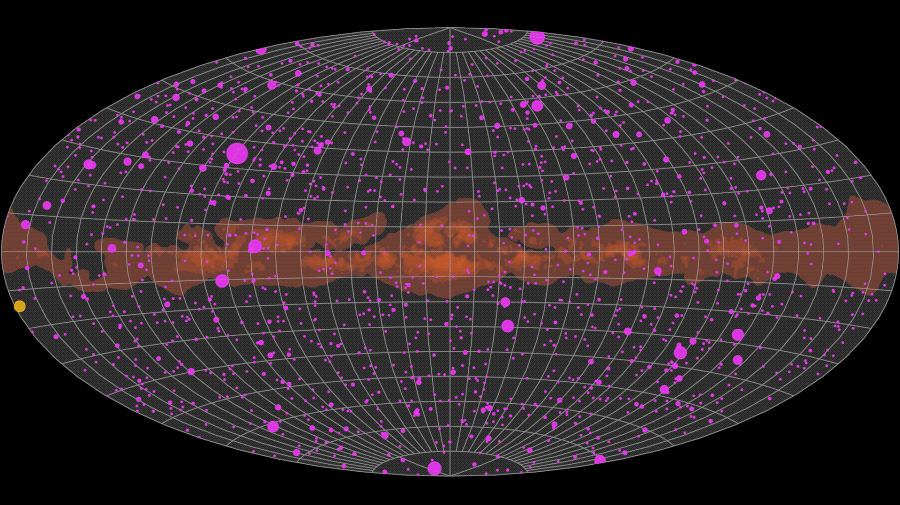The Universe is filled with light. But the human eye catches only a tiny range of wavelengths of the spectrum, so all the beauty of the world’s high- and low-energy radiation is inaccessible to us with the naked eye. Fortunately, we have created tools that allow us to see invisible rays. One of these instruments has a NASA Fermi gamma-ray space telescope — an observatory hanging in low Earth orbit and observing gamma rays of light of the highest energy in the Universe.

Fermi constantly monitors the entire sky, observing the sources of gamma radiation and how they change over time. Its observations allow astronomers to create and update a map of gamma-ray sources. Thanks to Fermi, an animation was created showing gamma radiation from 1,525 sources represented by pulsating purple circles collected between February 2022 and February 2023. At the same time, each frame displays three days of observations. The larger the circle, the brighter the gamma radiation. The yellow circle represents the visible path of the Sun across the sky during this time period. The plane of the Milky Way in the animation looks like an orange stripe extending through the center of the image. Gamma radiation is also present in it — a brighter color means a brighter glow.
Most of the radiation comes from a type of galaxy known as blazars. This is a subgroup of quasar galaxies. A quasar is a galaxy with an extremely active core. A supermassive black hole is absorbing matter at a tremendous rate. This material heats up so much around a supermassive black hole that it emits the brightest light in the Universe.
Some of these quasars emit plasma jets from the galactic core. When a black hole feeds, some of the material orbiting it is deflected and accelerated along magnetic field lines beyond the event horizon. When it reaches the poles, this material “shoots” into space at speeds approaching light. A blazar is a quasar that has a jet directed at the Earth or almost at it. Thanks to this orientation, the light becomes even brighter across the entire spectrum. Blazars are known sources of gamma radiation, but their light fluctuates on fairly short timescales.
According to NASA.
Follow us on Twitter to get the most interesting space news in time
https://twitter.com/ust_magazine

